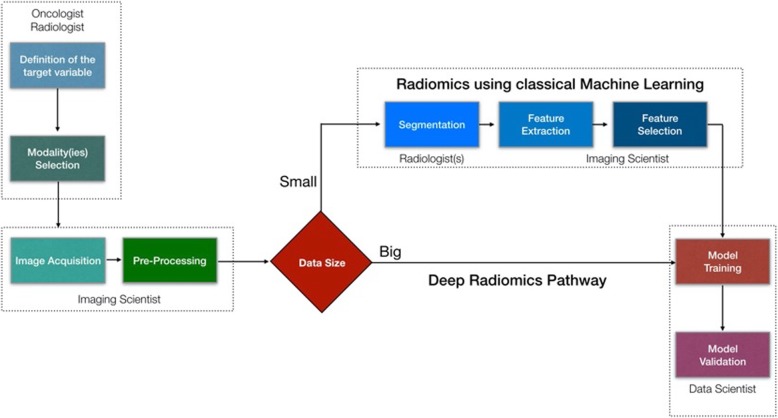Fig. 1.
A multidisciplinary radiomics workflow. Initially a group of clinicians should define the clinical problem that the proposed model should deal with and make decisions on what kind of imaging modalities should be recruited. Imaging scientists needs to make sure that acquisition protocols are optimally designed producing high quality images, as well as for the pre-processing of the images. Then depending on the size of the available imaging studies we need to decide which pipeline to use. In case of big data (in the order of thousands) a deep radiomics approach can be suggested avoiding tedious and time-consuming processes like tumor segmentation by multiple radiologists. In addition, deep convolutional neural networks have been proven more efficient to model complex problems compared with traditional machine learning algorithms, as long as data availability requirement is satisfied. Finally, the data sets are allocated for training, validation and testing purposes

